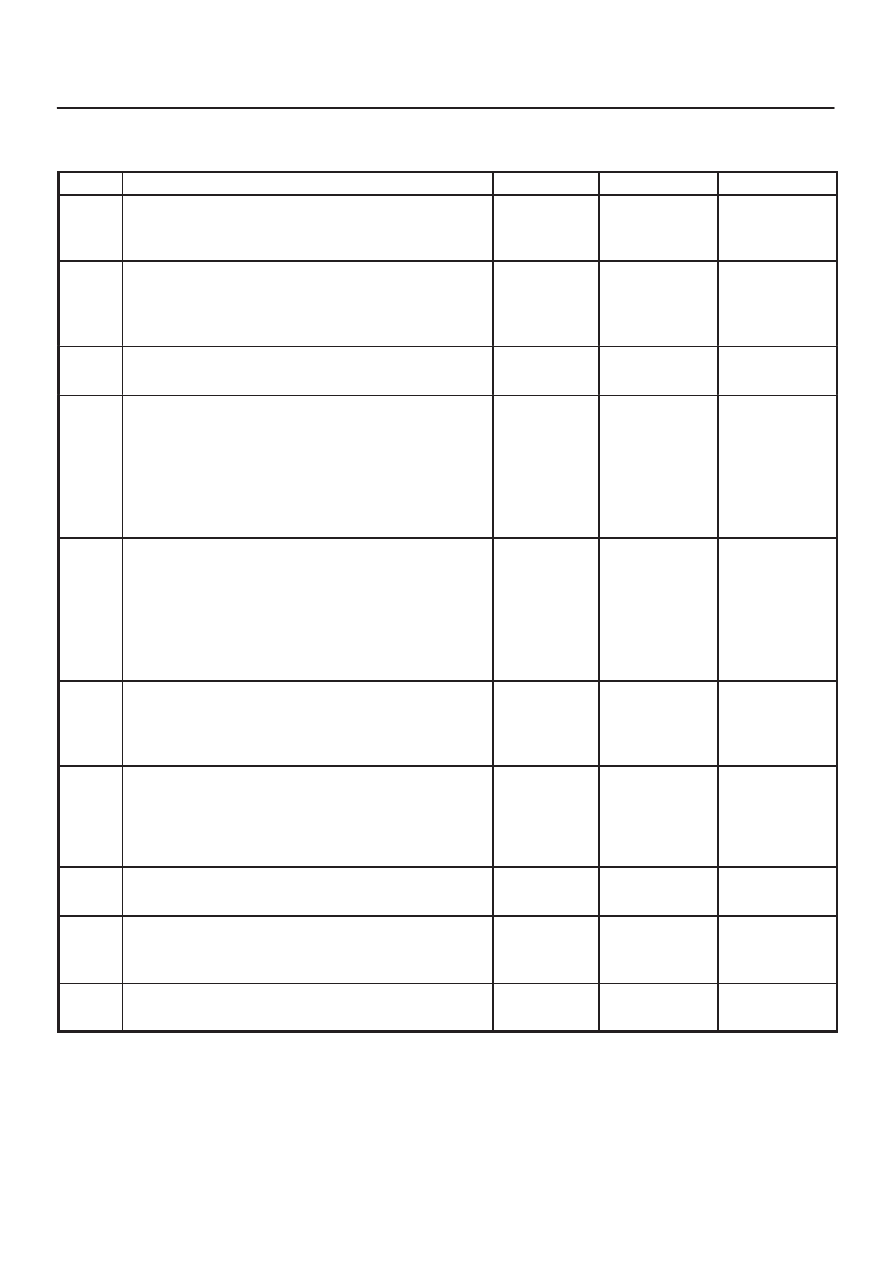Opel Frontera UE. Manual - part 798

6E1–75
X22SE 2.2L ENGINE DRIVEABILITY AND EMISSION
Fuel System Electrical Test
(Cont'd)
Step
No
Yes
Value(s)
Action
9
Check for short or open between the ECM and the fuel
pump relay.
Was a problem found?
—
Verify repair
Go to Step 10
10
1. Check the fuel pump relay circuit for a poor terminal
connection at the ECM.
2. If a problem is found, replace terminal as necessary.
Was a problem found?
—
Verify repair
Go to Step 11
11
Replace the ECM.
Is the action complete?
—
Verify repair
—
12
1. Reconnect the fuel pump relay.
2. Disconnect the fuel pump electrical connector at the
fuel tank.
3. Using a test light connected to ground, probe the
fuel pump feed wire (harness side).
4. Command the fuel pump ON with a Tech 2.
Did the light illuminate for 2 seconds?
—
Go to Step 15
Go to Step 13
13
1. Honk the horn to verify that the horn relay is
functioning.
2. Substitute the horn relay for the fuel pump relay.
3. Leave the test light connected as in step 12.
4. Command the fuel pump ON with the Tech 2.
Did the test light illuminate for 2 seconds when the fuel
pump was commanded ON?
—
Go to Step 17
Go to Step 14
14
1. Re–connect the horn relay in its proper location.
2. Check for a short circuit, blown fuse or open circuit
between the relay and the fuel tank.
Is the action complete?
—
Verify repair
—
15
1. With the fuel pump electrical connector at the fuel
tank disconnected, connect a test light between the
feed wire and the ground wire (harness side).
2. Command the fuel pump ON with a Tech 2.
Did the test light illuminate for 2 seconds?
—
Go to Step 18
Go to Step 16
16
Repair the open circuit in the fuel pump ground wire.
Is the action complete?
—
Verify repair
—
17
1. Re–connect the horn relay in its proper location.
2. Replace the fuel pump relay.
Is the action complete?
—
Verify repair
—
18
Replace the fuel pump.
Is the action complete?
—
Verify repair
—